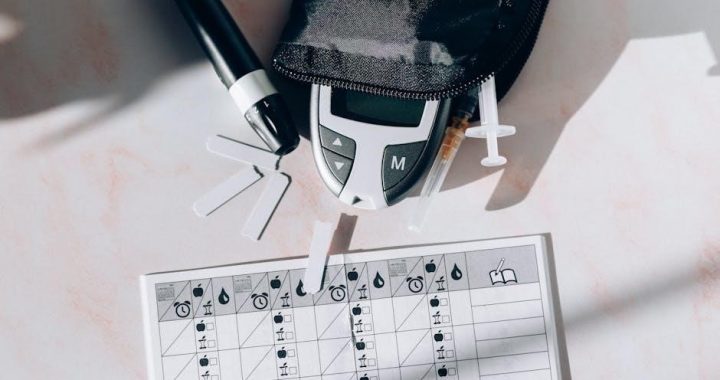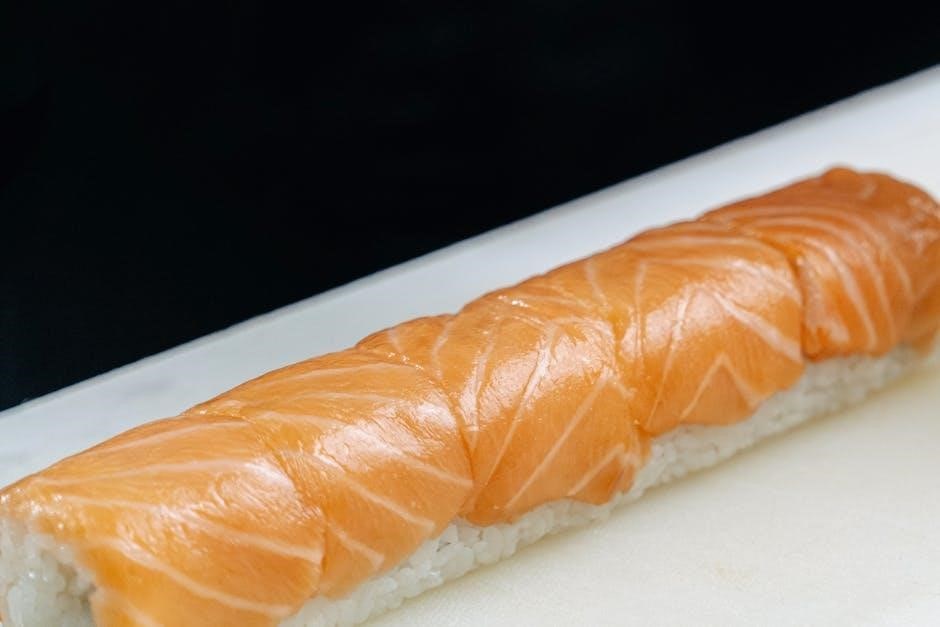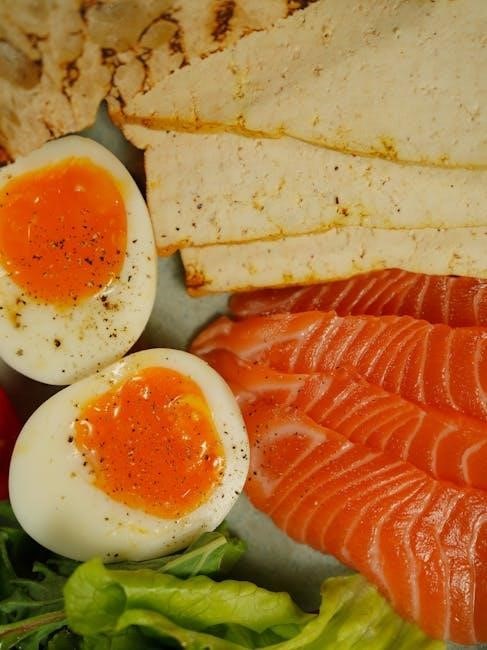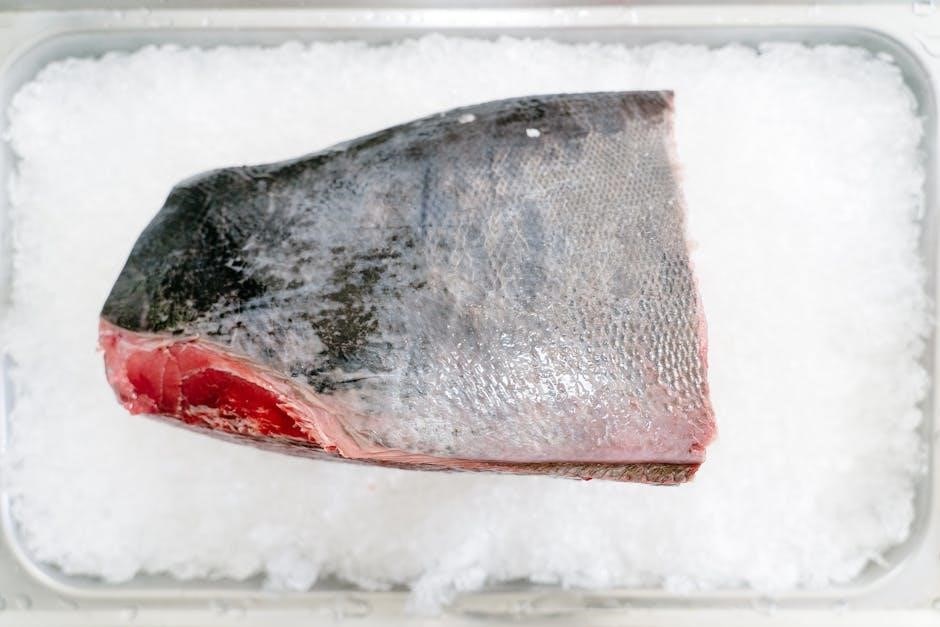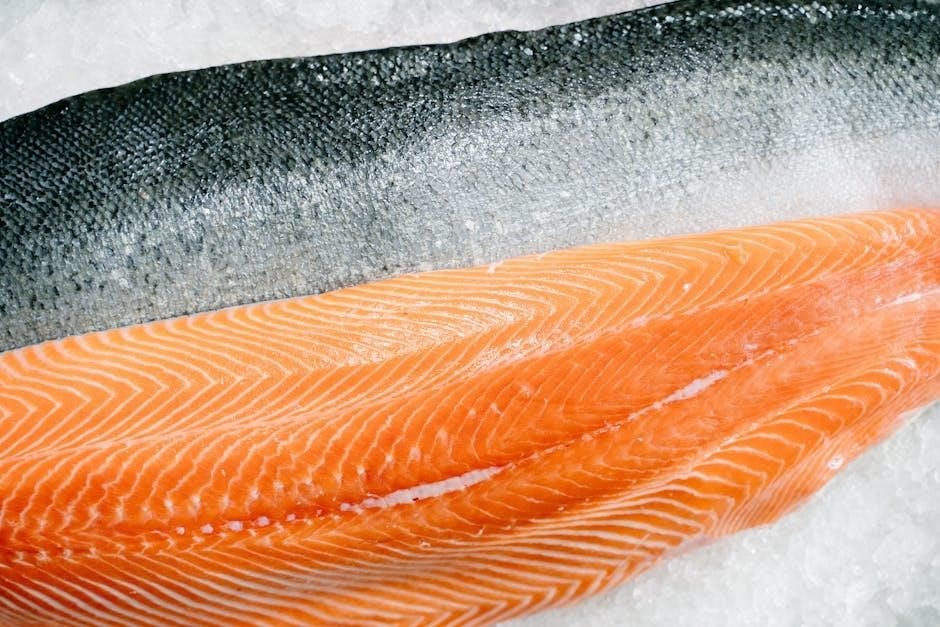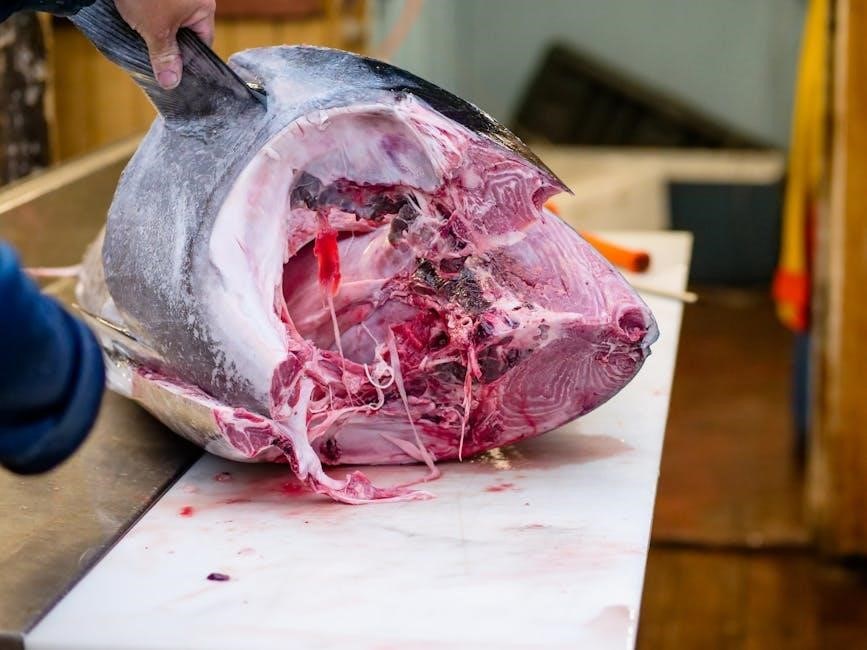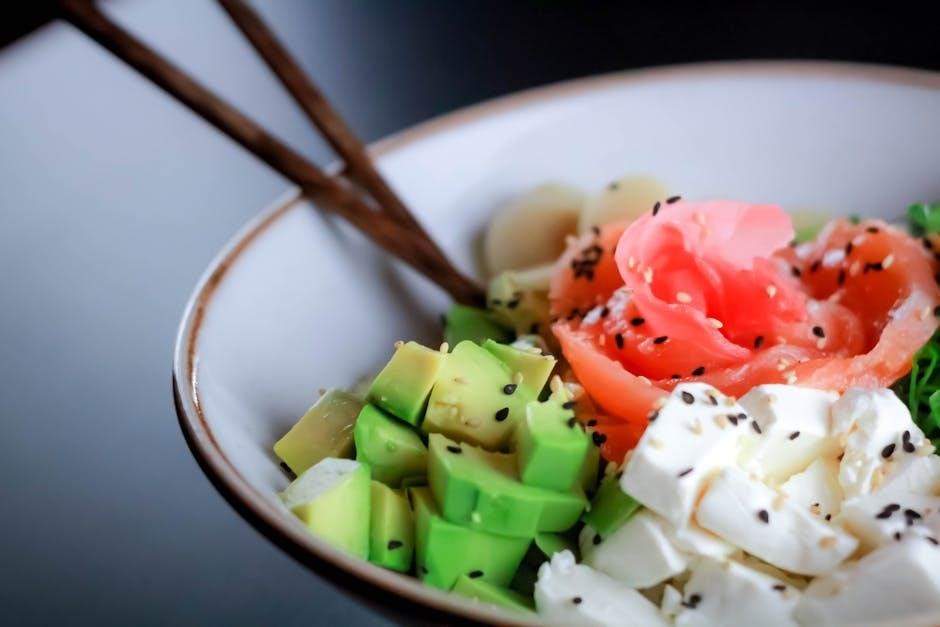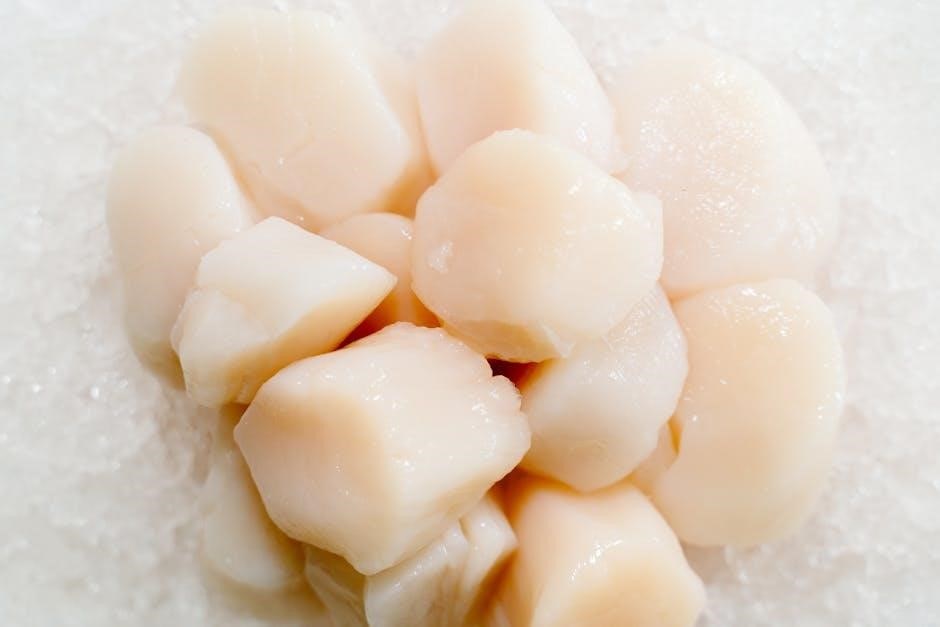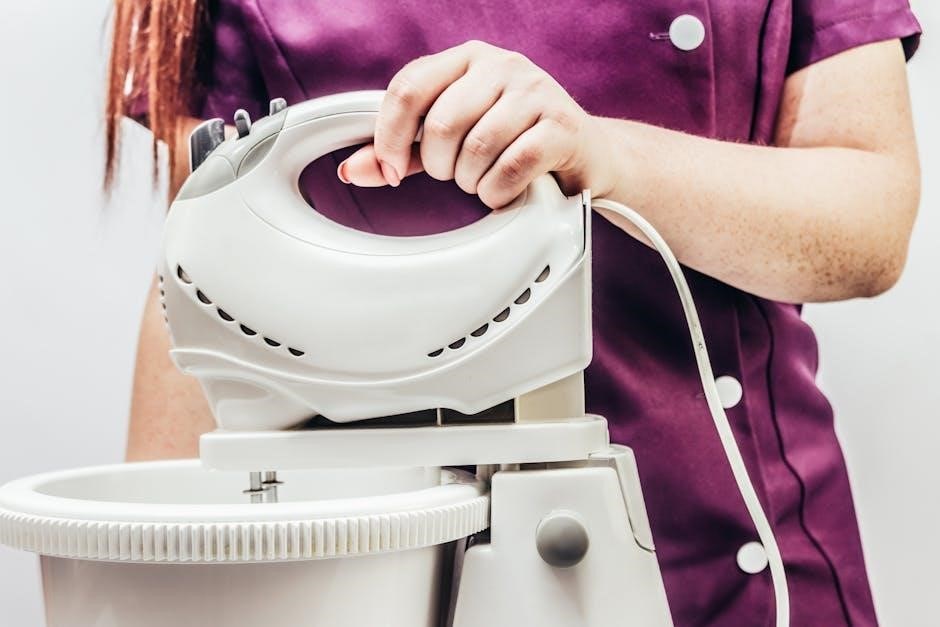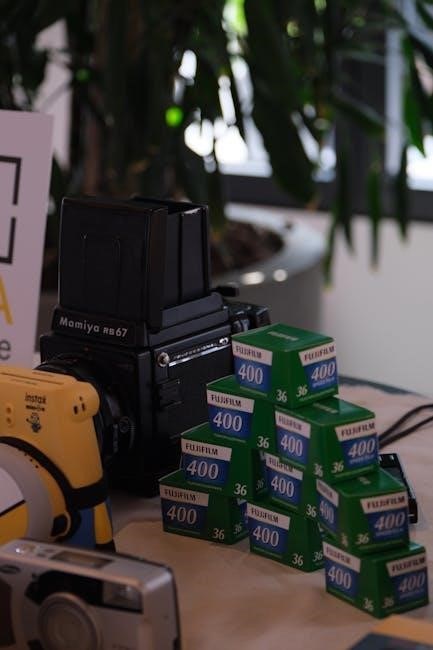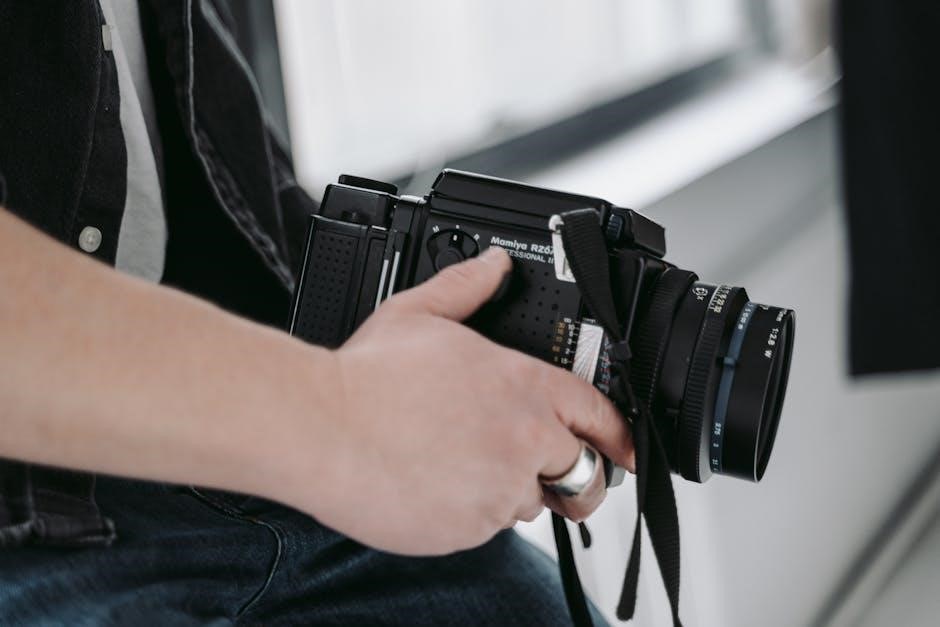A dichotomous key is a tool used for systematic identification, presenting paired statements (couplets) with mutually exclusive options. It guides users through a series of choices to identify organisms or objects accurately.
What is a Dichotomous Key?
A dichotomous key is a structured tool designed to identify species or objects through a series of paired statements, known as couplets. Each couplet presents two contrasting characteristics, allowing users to systematically narrow down possibilities. By selecting the correct option at each step, the user progresses toward identifying the specimen. This method is widely used in biology and education for its efficiency in teaching classification and critical thinking. The key relies on observable traits, making it accessible even to those without extensive prior knowledge. Its step-by-step approach ensures accuracy and clarity, making it an essential resource in educational settings. It helps reinforce taxonomic concepts and is particularly valuable for students learning to classify organisms based on physical characteristics. Additionally, dichotomous keys promote logical reasoning and problem-solving skills, essential for scientific inquiry.
The Purpose of a Dichotomous Key
The primary purpose of a dichotomous key is to provide a systematic method for identifying and classifying organisms, objects, or concepts based on observable characteristics. It serves as an educational tool to teach students about classification systems, promoting critical thinking and analytical skills. By guiding users through a series of logical steps, it helps narrow down possibilities to arrive at a precise identification. This tool is particularly valuable in biology and taxonomy, enabling researchers and learners to accurately determine species or categories. Additionally, dichotomous keys enhance observation skills and reinforce taxonomic concepts. They are widely used in fieldwork and laboratory settings for quick and reliable identification. Overall, the key’s purpose is to simplify complex classification processes, making them accessible and efficient for both educational and professional applications. Its structured approach ensures clarity and accuracy, fostering deeper understanding of biological diversity and organization.
Structure of a Dichotomous Key
A dichotomous key is structured as a series of paired statements, known as couplets, that present two mutually exclusive options. Each couplet is designed to guide the user toward identifying a specimen by narrowing down its characteristics. The key follows a hierarchical organization, starting with broad traits and progressively moving to more specific ones. Users select the option that best matches their specimen, leading them to the next relevant couplet. This branching process continues until the final identification is reached; The structure ensures a systematic and methodical approach to identification, making it both efficient and accurate. Typically, each couplet is numbered or coded to maintain clarity and ease of navigation. This organized format allows users to eliminate incorrect options step-by-step, ultimately pinpointing the correct classification of the specimen in question. The simplicity and logic of this structure make it a powerful tool for educational and scientific applications.

Understanding the Dichotomous Key Worksheet

A dichotomous key worksheet is a structured guide that helps users identify specimens through a series of paired questions, leading to accurate classification and enhancing scientific and educational understanding.
Components of a Dichotomous Key Worksheet

A dichotomous key worksheet typically consists of a series of paired statements, known as couplets, which present two distinct options. Each couplet is designed to guide the user through a binary decision-making process, narrowing down the identification of a specimen. The worksheet often includes a key structure that systematically organizes these couplets, ensuring a logical flow from broader characteristics to more specific traits. Additionally, it may incorporate visual aids, such as diagrams or illustrations, to assist in identifying features. The final component is a reference section, which provides answers or outcomes corresponding to each possible path through the key, allowing users to determine the correct classification of the specimen being analyzed. This structured approach makes the worksheet both user-friendly and effective for educational and fieldwork purposes.
How to Use a Dichotomous Key Worksheet
Using a dichotomous key worksheet involves a systematic approach to identify specimens or objects. Start by carefully observing the specimen and reading the first couplet, which presents two distinct options. Select the option that best matches the specimen’s characteristics, then follow the corresponding path to the next couplet. Continue this process, narrowing down the possibilities until you reach a final identification. Ensure accuracy by thoroughly examining each feature described in the couplets. If unsure, revisit previous steps to verify selections. The worksheet often includes an answer key or reference section to confirm identifications. By methodically following the key, users can efficiently and accurately determine the classification of the specimen. This method is particularly useful in biology, botany, and zoology for identifying species based on observable traits.
Benefits of Using a Dichotomous Key Worksheet
Dichotomous key worksheets offer numerous benefits for learners and educators alike. They provide a structured and systematic approach to identifying specimens, enhancing critical thinking and problem-solving skills. These worksheets are particularly effective in biology education, as they engage students in active learning and reinforce taxonomic concepts. By guiding users through a series of logical steps, they improve observation and classification abilities. Additionally, dichotomous keys are versatile, suitable for various educational settings, from classrooms to fieldwork. They also serve as valuable tools for self-assessment, allowing learners to verify their understanding through answer keys. Overall, dichotomous key worksheets are an engaging and practical resource for fostering scientific literacy and analytical thinking.

Locating Dichotomous Key Worksheets
Dichotomous key worksheets are widely available online, with popular educational websites offering free downloads in PDF format. They are easily searchable and provide efficient access to learning resources.
Where to Find Dichotomous Key Worksheets Online
Dichotomous key worksheets can be easily found online through educational platforms and websites. Popular destinations include Google Classroom, Moodle, and other learning management systems that host study materials. Additionally, educational databases like JSTOR and ScienceDirect often provide access to PDF versions of dichotomous keys tailored for specific subjects, such as biology or botany. You can also search for “dichotomous key worksheet answers PDF” on search engines, which will direct you to reliable sources offering free downloads. Many educational institutions and biology departments share these resources openly on their websites. By using the right keywords and exploring these platforms, you can quickly locate and access dichotomous key worksheets to aid in your studies or teaching.

Popular Websites for Dichotomous Key Worksheets
Several websites are renowned for offering high-quality dichotomous key worksheets. Google Classroom and Moodle are popular platforms where educators often share these resources. Additionally, websites like Education.com and Teachers Pay Teachers provide a wide range of dichotomous key worksheets tailored for various subjects. BioInteractive, a platform dedicated to biology education, offers detailed keys for species identification. Khan Academy and Quizlet also feature interactive tools and downloadable PDFs for practice. ScienceDirect and JSTOR host academic articles and resources that include dichotomous keys for advanced studies. Many educational institutions and biology departments share these worksheets on their official websites, making them easily accessible. These platforms ensure that students and educators can find reliable materials to aid in learning and teaching biological classification and identification techniques.
How to Download Dichotomous Key Worksheets in PDF Format
To download dichotomous key worksheets in PDF format, visit reputable educational websites like Education.com, Teachers Pay Teachers, or BioInteractive. Use the search bar to find “dichotomous key worksheet answers PDF” and filter results by file type to locate PDFs. Select the desired worksheet, then click the download button. Some sites may require free registration or a subscription. Ensure the PDF is from a reliable source for accuracy. Save the file to your device for easy access and printing. Always verify the worksheet’s relevance to your study material before downloading. This method allows you to access high-quality resources efficiently, aiding in effective species identification and biological classification studies. By following these steps, you can obtain the necessary materials to enhance your learning experience with dichotomous keys.

Answering Dichotomous Key Worksheets
A dichotomous key worksheet presents paired statements to identify specimens. Select the correct option for each couplet, using process of elimination. Carefully read each statement to ensure accurate identification.
Step-by-Step Guide to Completing a Dichotomous Key Worksheet
To complete a dichotomous key worksheet, start by reading the first couplet carefully. Each couplet offers two mutually exclusive options. Select the statement that best matches your specimen’s characteristics.
Once a choice is made, follow the direction indicated by the key (e.g., “go to 2” or “go to 3”). Repeat this process, eliminating incorrect options at each step, until you reach the final identification.
Ensure accuracy by carefully reviewing each statement. If uncertain, revisit previous steps to confirm choices. This systematic approach ensures precise identification of the specimen or object in question.
Common Mistakes to Avoid When Using a Dichotomous Key
One of the most common mistakes when using a dichotomous key is rushing through the process without carefully reading each statement. This can lead to incorrect identifications. Another error is failing to follow the key’s sequential structure, such as skipping steps or not adhering to the flow of couplets.
Additionally, users often overlook the importance of verifying their choices at each step. Assuming prior knowledge without double-checking can result in misidentification. It’s crucial to approach each couplet methodically and avoid making hasty decisions based on partial information.
Finally, neglecting to review the final identification for consistency with the specimen’s characteristics is a frequent oversight. By being attentive and meticulous, users can minimize errors and ensure accurate results when using a dichotomous key worksheet.
Tips for Accurately Answering Dichotomous Key Questions
Tips for Accurately Answering Dichotomous Key Questions
To accurately answer dichotomous key questions, start by thoroughly understanding the structure of the key. Read each statement carefully and ensure you comprehend the contrasting options before making a choice.
Always proceed step-by-step, as each decision narrows down the possibilities. Avoid skipping steps, as this can lead to incorrect identifications. Use prior knowledge about the specimen but verify it against the key’s descriptions.
Double-check your answers by retracing your steps. If uncertain, consult additional resources or seek clarification. Being systematic and patient will enhance accuracy and reduce errors.
Practicing with multiple specimens and reviewing the key’s logic can also improve your proficiency. By following these tips, you can master the use of dichotomous key worksheets effectively.
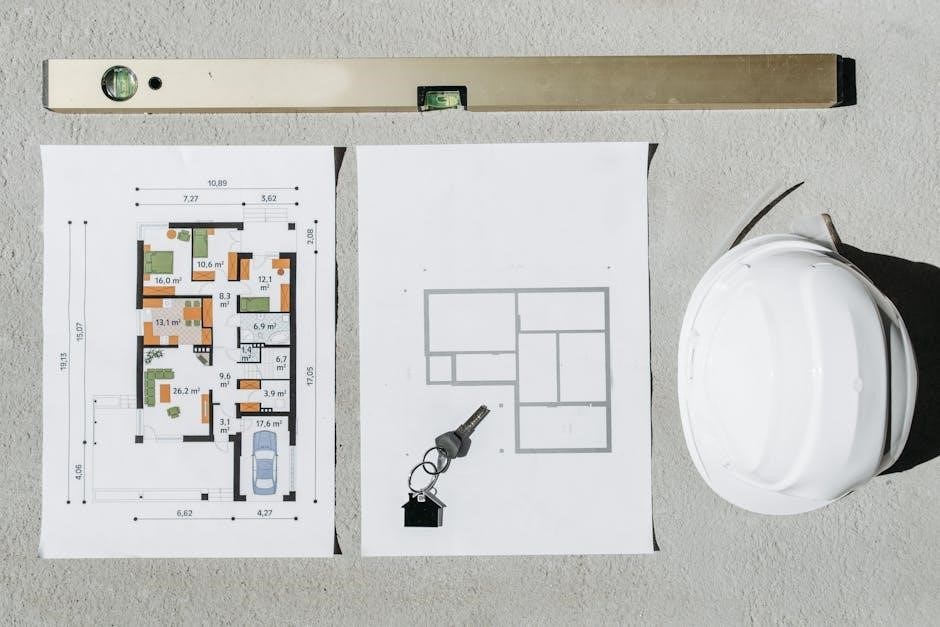
Creating Your Own Dichotomous Key Worksheet
Creating a dichotomous key worksheet involves organizing paired statements to guide systematic identification. It requires clear, mutually exclusive options to ensure accurate and logical decision-making for users.
Steps to Design a Dichotomous Key Worksheet
Designing a dichotomous key worksheet involves several structured steps. First, define the scope and purpose of the key, ensuring it aligns with the intended use. Next, identify and list the key characteristics of the specimens or objects to be identified. These characteristics should be mutually exclusive and easy to observe. Following this, develop clear and concise couplets (paired statements) that present two distinct options. Organize these couplets in a logical sequence, starting with broader characteristics and progressing to more specific ones. Ensure each choice leads to the next relevant question or directly to an identification. Finally, test the key with various specimens to validate its accuracy and effectiveness. This systematic approach ensures the worksheet is both user-friendly and reliable for accurate identification.
Best Practices for Creating Effective Dichotomous Keys
Creating an effective dichotomous key requires careful planning and adherence to best practices. Ensure that the couplets (paired statements) are clear, concise, and unambiguous, with mutually exclusive options. Start with broad, easily observable characteristics and progress to more specific traits. Avoid using technical jargon to make the key accessible to all users. Test the key with multiple specimens to validate its accuracy and reliability. Include visual aids, such as diagrams or images, to enhance understanding. Regularly review and update the key to reflect new information or corrections. Use a logical flow that minimizes confusion, ensuring each decision leads to the correct identification. By following these practices, you can create a dichotomous key that is both effective and user-friendly, serving as a valuable tool for identification and education.
How to Validate Your Dichotomous Key Worksheet
Validating a dichotomous key worksheet involves ensuring its accuracy and effectiveness. Begin by testing the key with known specimens to confirm it leads to correct identifications. Review each couplet for clarity and mutual exclusivity, eliminating ambiguities. Compare the key’s outcomes with trusted reference materials or expert opinions to verify accuracy; Peer review can also provide valuable insights and catch potential errors. Additionally, assess the logical flow to ensure each decision point is sound and free from confusion. Address any inconsistencies or errors identified during validation by revising the key as needed. This process ensures the dichotomous key is reliable and user-friendly, making it a valuable tool for accurate identifications. Regular validation helps maintain the key’s effectiveness and adaptability to new information or specimens.

Using Dichotomous Key Worksheets in Education
Dichotomous key worksheets enhance learning by fostering critical thinking and identification skills. They engage students in active learning, promoting deeper understanding of biological classification and practical applications in real-world scenarios.
Role of Dichotomous Keys in Biology Education
Dichotomous keys play a vital role in biology education by teaching students how to systematically identify and classify organisms. They enhance critical thinking and observational skills, as they require students to analyze characteristics and make logical decisions. By breaking down complex classification processes into simpler, step-by-step choices, dichotomous keys make learning taxonomy accessible and engaging. They also foster active learning, encouraging students to interact with specimens and develop a deeper understanding of biological diversity. Furthermore, these tools bridge the gap between theoretical knowledge and practical application, preparing students for real-world scientific investigations and fieldwork. Their use in education promotes collaboration among peers and reinforces the importance of attention to detail, making them an indispensable resource in biology classrooms.
Integrating Dichotomous Key Worksheets into Lesson Plans
Integrating dichotomous key worksheets into lesson plans enhances biology education by providing hands-on, interactive learning experiences. Educators can incorporate these tools to align with curriculum goals, such as teaching taxonomy, classification, and observation skills. For example, worksheets can be used as group activities to promote collaboration and critical thinking. Teachers can also design lessons where students use dichotomous keys to identify specimens in the classroom or during field trips. Additionally, these worksheets can serve as assessments to evaluate students’ understanding of biological diversity and classification principles. By varying the complexity of the keys, educators can cater to different learning levels, ensuring that all students engage effectively. This approach not only deepens conceptual knowledge but also fosters scientific inquiry and problem-solving abilities, making biology more engaging and accessible for learners of all ages.
Evaluating Student Understanding with Dichotomous Key Worksheets
Evaluating student understanding through dichotomous key worksheets is an effective method to assess their grasp of biological classification. These worksheets provide clear answers in PDF format, allowing educators to quickly identify areas where students may need additional support. By reviewing completed worksheets, teachers can determine if students can accurately identify species, understand key characteristics, and apply logical reasoning. Common mistakes, such as misinterpreting couplets or skipping steps, can be pinpointed and addressed. Furthermore, these evaluations help measure the effectiveness of lesson plans and guide future instruction. Regular use of dichotomous key worksheets ensures that students not only retain knowledge but also develop essential scientific skills. This method of assessment is both efficient and insightful, offering a comprehensive view of student learning outcomes in biology education.

Troubleshooting Dichotomous Key Worksheets
Common issues include incorrect identifications or ambiguous couplets. Testing with known specimens helps resolve errors. Reviewing and refining the key ensures clarity and accuracy, improving its effectiveness for users.
Common Issues with Dichotomous Key Worksheets
Common issues with dichotomous key worksheets include ambiguous or overlapping characteristics, leading to incorrect identifications. Another problem is the lack of clarity in couplets, causing confusion. Additionally, incomplete keys that do not account for all possible specimens can result in frustration. Users may also face challenges with outdated or inaccurate information, especially in rapidly evolving fields like biology. Furthermore, poorly designed worksheets with insufficient visual aids or unclear terminology can hinder understanding. These issues highlight the importance of thorough testing and validation when creating dichotomous keys to ensure they are effective and user-friendly.
How to Resolve Errors in a Dichotomous Key
To resolve errors in a dichotomous key, begin by identifying the source of the mistake. Review the key for ambiguous or unclear couplets and revise them for clarity. Ensure that all characteristics are mutually exclusive and accurately described. Test the key with known specimens to verify its accuracy. If errors persist, consider adding visual aids or supplementary information to enhance understanding. Regularly update the key to incorporate new data or classifications. Additionally, seek feedback from users to pinpoint confusing sections and refine them. Finally, cross-reference with reliable taxonomic sources to ensure the key’s validity and effectiveness in accurately identifying specimens. By systematically addressing these issues, the dichotomous key becomes a more reliable tool for identification.
Refining Your Dichotomous Key Based on Feedback
Refining a dichotomous key based on feedback involves systematically addressing user insights to enhance clarity and accuracy. Start by collecting feedback from users, identifying confusing or ambiguous couplets, and pinpointing misidentifications. Analyze common issues and revise the key to improve the distinctness of characteristics and the logic of the flow. Consider rewording statements for greater precision and ensuring that each couplet offers mutually exclusive options. Test the revised key with additional specimens to verify its effectiveness. Document all changes and maintain a record of feedback for future iterations. Continuous refinement ensures the key remains reliable and user-friendly, adapting to new information and improving over time. Regular updates and clear documentation are essential for maintaining its validity and educational value.
Dichotomous key worksheets are invaluable tools for systematic identification, offering clear, step-by-step processes to determine species or objects. They enhance learning and critical thinking, proving essential in education and beyond.
Importance of Dichotomous Key Worksheets in Learning
Dichotomous key worksheets are essential tools for fostering critical thinking and systematic learning. By guiding users through a series of choices, they help identify species or objects methodically. These worksheets are particularly valuable in biology education, enabling students to develop problem-solving skills and understand taxonomic relationships. They also enhance retention by breaking down complex information into manageable steps. Additionally, dichotomous keys promote active learning, encouraging students to engage deeply with the material. Their structured format makes them accessible to learners of all levels, providing a clear pathway to identification. Overall, dichotomous key worksheets are indispensable for developing scientific literacy and analytical abilities, making them a cornerstone of educational resources.
Future Applications of Dichotomous Key Worksheets
Dichotomous key worksheets hold promise for future applications in digital learning platforms, enhancing accessibility and engagement. Their structured format can be integrated into interactive tools, such as mobile apps or online modules, to create dynamic learning experiences. Additionally, these keys may expand beyond biology into other disciplines like environmental science or medicine, aiding in species conservation or disease diagnosis. The ability to adapt dichotomous keys to emerging technologies, such as AI-driven systems, could further streamline the identification process; Furthermore, their use in collaborative learning environments could foster teamwork and critical thinking among students. As education evolves, dichotomous key worksheets will remain a valuable resource, bridging traditional methods with innovative approaches to learning and problem-solving.

